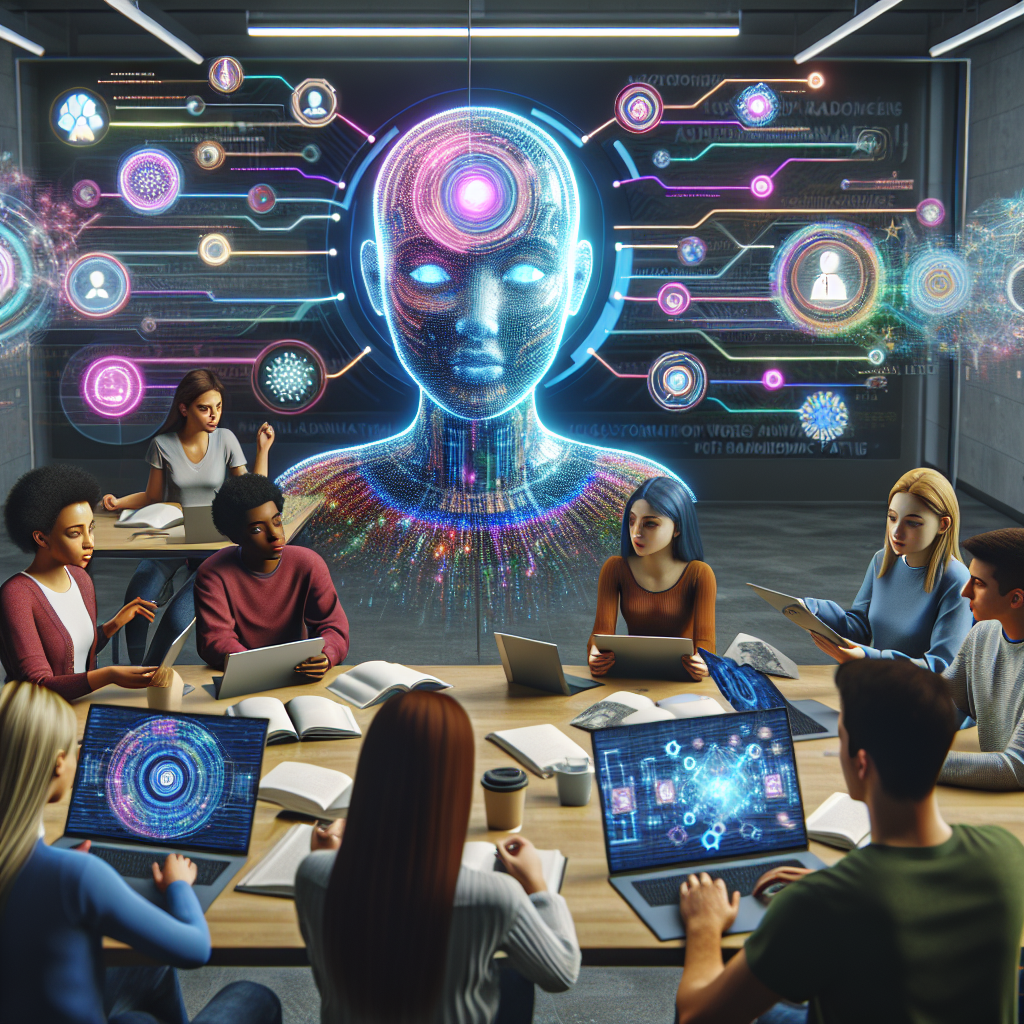Crafting Personalized Learning: ChatGPT’s Role in E-Learning with Knowledge Graphs

Crafting Personalized Learning: ChatGPT’s Role in E-Learning with Knowledge Graphs
Welcome to the exciting intersection of artificial intelligence and education! Today, we’re diving into groundbreaking research that explores how ChatGPT can revolutionize e-learning through personalized support. Imagine a learning assistant that not only understands where you struggle but adapts its guidance based on your unique learning journey. Sounds like something from science fiction, right? Let’s discover the real science behind it!
Unleashing AI in Education: Oh, The Places We’ll Go!
E-learning is more than just a buzzword—it’s quickly becoming a cornerstone of modern education. Traditional methods often fall short in personalizing learning experiences, and that’s where artificial intelligence (AI), particularly Large Language Models (LLMs) like ChatGPT, steps in. These models, with their impressive ability to generate human-like responses, promise to transform how we learn by tailoring educational support to each student’s needs.
You might wonder, “How can AI better understand my learning struggles?” Well, that’s where knowledge graphs join the party, providing a structured map of knowledge to guide the AI.
The Magic of Knowledge Graphs: Behind the Curtain
So, what exactly are knowledge graphs? Think of them as sophisticated concept maps that outline the relationships between different topics. In this study, knowledge graphs are used to identify what a student needs to know before tackling new material. Picture a web connecting basic math skills to more complex algebraic concepts. ChatGPT uses this information to offer guidance tailored to where you stand in that web.
Depending on whether your understanding is ranked as good, average, or poor, ChatGPT provides advanced insight, refreshers on fundamental concepts, or detailed prerequisite reviews. It’s like having a digital tutor that knows just what you need to conquer a tricky math problem.
Unpacking the Research: Real-World Classroom Relevance
Dynamic Assistance: The ChatGPT and Knowledge Graph Duo
The research introduces a system unlike traditional Intelligent Tutoring Systems (ITSs), which often offer one-size-fits-all hints. By integrating dynamic knowledge graphs with ChatGPT, the system delivers nuanced, context-aware support. Imagine typing a question about algebraic expressions and getting tailored guidance that considers your background in quadratic equations!
Evaluating Performance: Is AI Ready for Prime Time?
The research team conducted experiments with ChatGPT to determine its effectiveness in offering personalized guidance. Experts analyzed output for various student types using easy, moderate, and hard questions to see how well ChatGPT’s responses catered to different learning paths. The results were promising—students received feedback closely aligned with their comprehension level, especially for simpler questions.
However, as complexity increased, the need for human supervision became clear. LLMs can sometimes misinterpret a student’s issue, necessitating a blend of AI-driven and human-led education strategies.
Pilot Studies and Perceptions: Putting AI to the Test
In a user study, university students interacted with the AI system and found it generally effective, especially for easy queries. Interestingly, the feedback from these interactions changed students’ perceptions, making them more optimistic about using AI-based tools for learning. This shift highlights the potential of AI in education, though it also underscores the importance of human oversight to ensure accuracy and relevance.
Key Takeaways: ChatGPT’s Role in Your Learning Journey
Ready to harness AI’s full potential when studying? Here are some bite-sized insights from this research:
-
Customized Guidance: ChatGPT, powered by knowledge graphs, can provide personalized learning support, tailoring help to your current understanding and needs.
-
Human Assistance Still Essential: While AI is powerful, human educators are still crucial for verifying and contextualizing feedback.
-
Not a One-Size-Fits-All Solution: As question difficulty rises, so does the complexity of the needed support—ensure a blend of AI and human guidance for the best learning experience.
-
Interaction and Adaptation: Engaging with AI tools could positively change your learning habits and perceptions of technology in education.
Embrace this technology as a complementary tool, and soon, you might find yourself navigating tricky academic waters with newfound ease and confidence. As AI continues to evolve, so does its ability to transform the educational landscape, bringing more personalized and effective learning experiences to everyone. Happy learning, and may your educational journey be as unique and dynamic as you are!
If you are looking to improve your prompting skills and haven’t already, check out our free Advanced Prompt Engineering course.
This blog post is based on the research article “How Good is ChatGPT in Giving Adaptive Guidance Using Knowledge Graphs in E-Learning Environments?” by Authors: Patrick Ocheja, Brendan Flanagan, Yiling Dai, Hiroaki Ogata. You can find the original article here.




